Strategy only succeeds when every initiative ties back to a clear vision. Yet too often, teams struggle to translate big-picture goals into structured, measurable plans that drive real progress. Without a shared framework, even strong ideas lose momentum — and visibility across departments begins to fade.
A strategic plan template bridges that gap by turning high-level objectives into actionable steps. It provides the structure to define your mission, set measurable goals, and align execution with long-term outcomes. With the right template, teams can plan confidently, track performance, and adapt to change without losing focus.
Throughout this article, we explore several strategic plan template examples — from one-page outlines to enterprise-ready frameworks — along with practical guidance on how to choose, customize, and implement them effectively.
Key takeaways
- Template selection: choose formats that fit your organization — one-page layouts for small teams and detailed frameworks for enterprise planning.
- Core components: include mission and vision statements, SWOT analysis, SMART goals, KPIs, and clear implementation roadmaps.
- Dynamic execution: turn static documents into actionable workflows using platforms like monday work management with visual tracking, automation, and AI-powered insights.
- Timeframe alignment: match planning periods to objectives — annual plans for execution, three-year for initiatives, and five-year for long-term vision.
- Structured process: follow a seven-step approach from team setup to ongoing reviews to ensure accountability and measurable progress.
What is a strategic plan template?
A strategic plan template is a pre-designed framework that helps you create a roadmap for achieving your organization’s long-term goals — a crucial need when a survey of nearly 800 executives found that only 45% were satisfied with the strategic-planning process.
More than a simple outline, it offers a structured way to capture your mission, vision, and objectives while translating them into concrete actions. By breaking complex goals into manageable parts, it helps teams stay aligned and focused on measurable outcomes.
These templates save you from starting with a blank page. They provide prompts and structure for every essential planning element — from analyzing your current situation to setting measurable goals and creating implementation timelines.
Types of strategic plan templates
Not every organization needs the same planning approach. Your template choice depends on factors like company size, industry requirements, and how much detail you need.
Some templates focus on high-level strategy that fits on a single page. Others span multiple sections with detailed analysis and implementation plans. The key is matching template complexity to your planning needs and available resources.
Below we shine a light on the key features of different template types to help you decide:
| Template type | Best for | Key features | Typical length |
|---|---|---|---|
| One-page templates | Start-ups, small teams | Visual overview, core priorities only | One page |
| Comprehensive templates | Large organizations | Detailed sections, multiple analyses | 10-20 pages |
| Department-specific templates | Functional teams | Focused on single business area | Three to five pages |
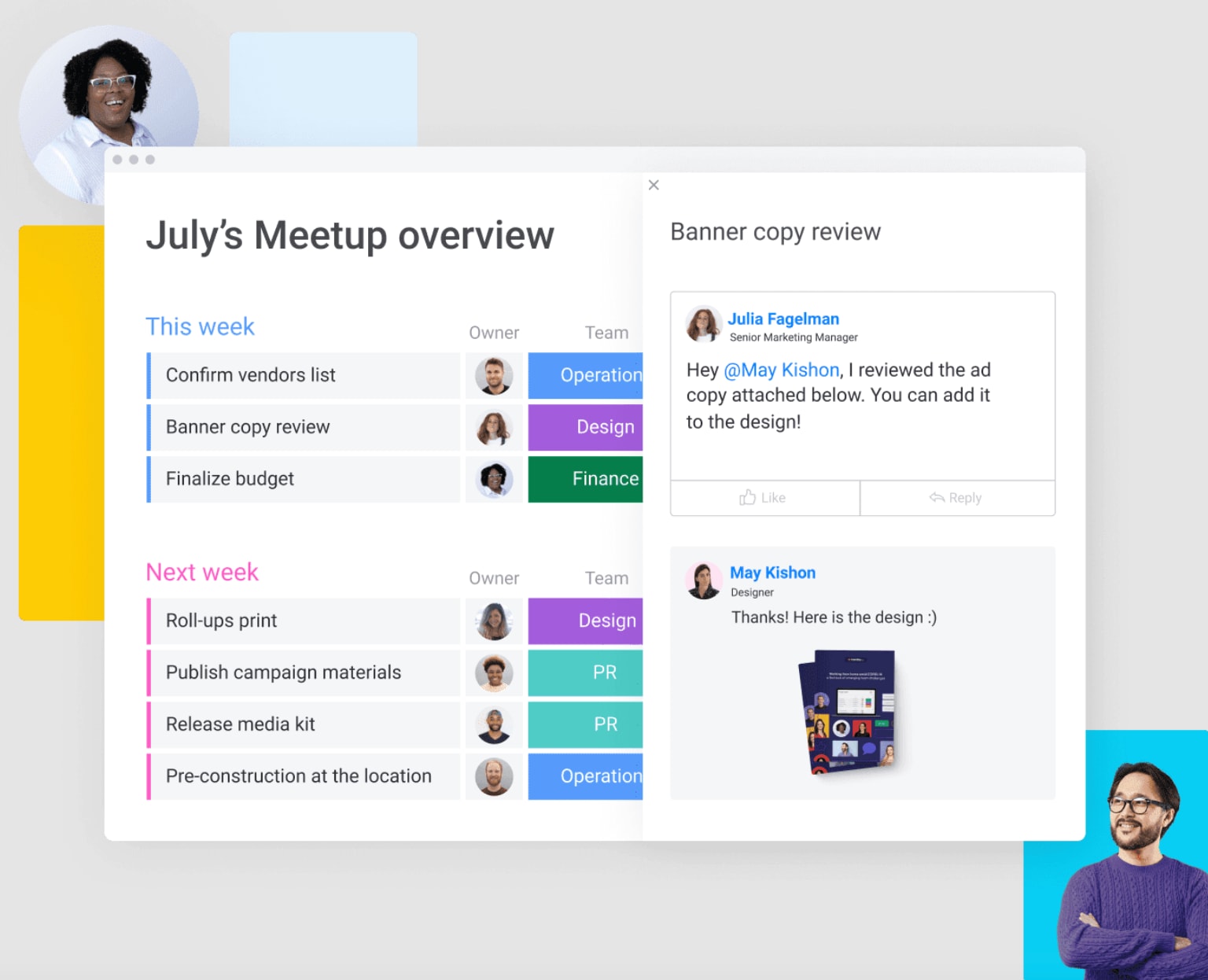
Business strategic plan templates
Business strategic plan templates help for-profit organizations focus on revenue growth, market expansion, and beating the competition, so consider using a business strategy template for a structured approach.
Unlike non-profit templates, these emphasize profitability metrics and shareholder value.
Marketing strategic plan templates
Marketing templates guide your team through aligning campaigns with business goals. They help you define brand positioning, analyze target audiences, and allocate budgets across channels, forming a solid marketing plan.
A strong marketing template provides the structure to connect your promotional activities directly to revenue goals. These frameworks also help you define your market position and ensure every campaign is a measurable step toward strategic success. Key components include:
- Brand positioning frameworks: define what makes you different from competitors.
- Audience analysis sections: build detailed customer personas and segments.
- Campaign planning tools: map out multi-channel marketing initiatives.
- Budget worksheets: track spending and ROI across all activities.
Operations strategic plan templates
Operations strategic plan templates help teams improve efficiency across daily workflows by aligning resources, systems, and performance targets. Within this framework, an operational plan template translates high-level operational goals into concrete actions, ensuring consistency across departments and measurable outcomes.
Work management platforms like monday work management enhance this process by enabling real-time tracking, automation, and visibility across all operational activities.
HR strategic planning templates
HR templates help you plan for workforce growth and development. They include sections for a succession planning template, skills gap analysis, and employee retention strategies.
These templates ensure your people strategy supports your business goals. You’ll find frameworks for talent development, compensation planning, and culture initiatives.
IT strategic plan templates
IT templates guide technology planning and digital transformation. They help you map out infrastructure upgrades, cybersecurity improvements, and system implementations.
Essential sections cover technology roadmaps, data governance, and digital innovation priorities. These templates translate technical needs into business language that executives understand.
Sales strategic plan templates
Sales templates focus on revenue generation and team performance. They include territory planning, quota setting, and sales process optimization frameworks.
You’ll find tools for pipeline analysis, competitive positioning, and sales enablement planning. These templates help sales leaders build predictable revenue engines.
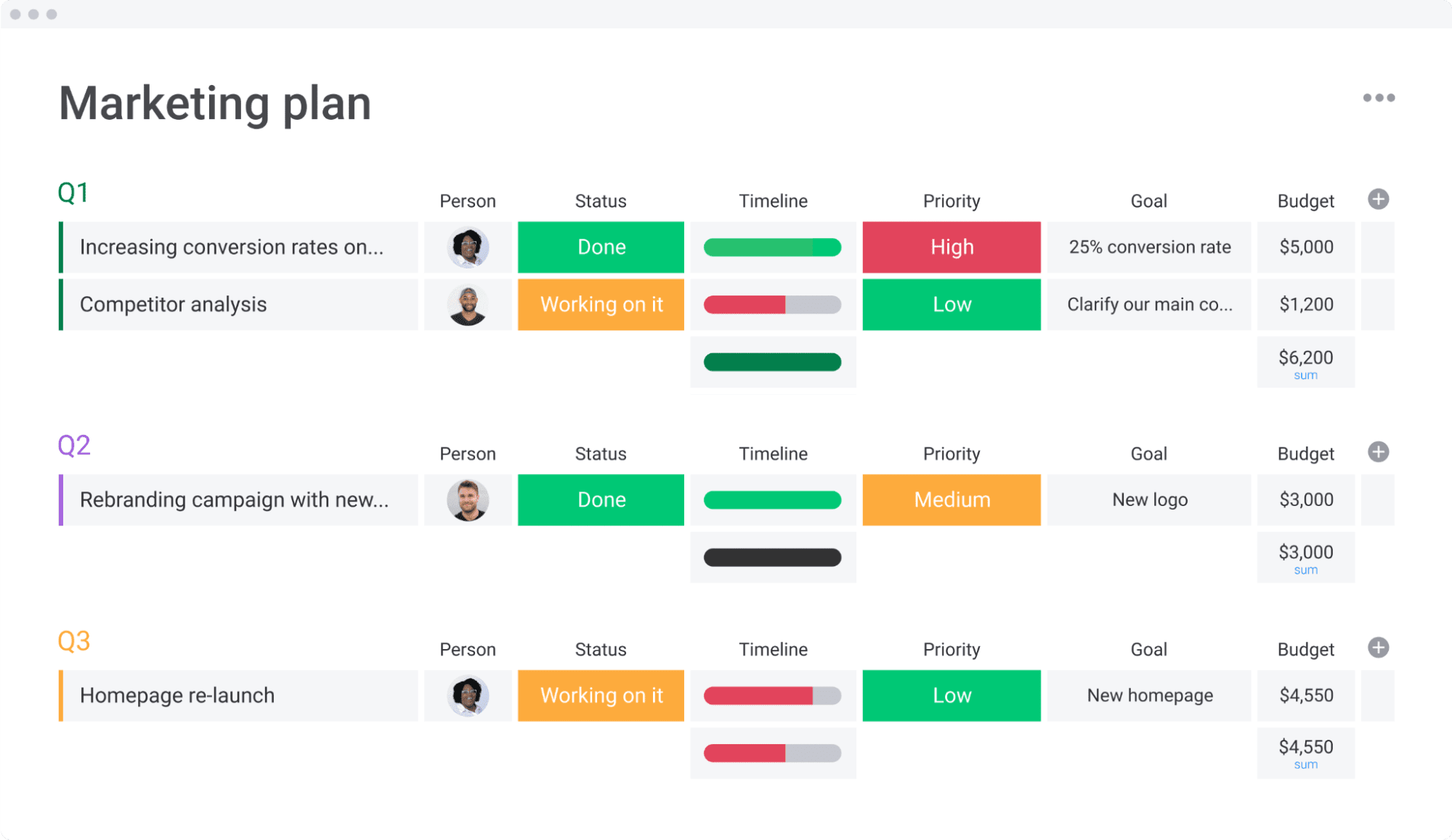
Non-profit strategic plan templates
Non-profit templates prioritize mission impact over profit margins, emphasizing community outcomes, donor relationships, and program effectiveness rather than financial returns.
The structure focuses on demonstrating social value and ensuring resources go toward mission-critical activities. These templates help non-profits balance their idealistic goals with operational realities.
Foundation strategic plan templates
Foundation templates guide grant-making organizations through funding decisions. They include frameworks for evaluating community needs, measuring impact, and building partnerships.
Key sections cover grant criteria development, impact assessment methods, and stakeholder engagement strategies.
Educational institution templates
Education templates help schools and universities plan for student success. They address academic program development, enrollment strategies, and institutional sustainability.
You’ll find sections for curriculum planning, student support services, and faculty development initiatives.
Healthcare organization templates
Healthcare templates balance patient care excellence with operational efficiency. They include quality improvement frameworks, patient safety protocols, and community health assessments.
These templates help healthcare organizations navigate complex regulations while maintaining focus on patient outcomes.
Strategic plan templates by company size
Every organization approaches strategic planning differently, and much of that depends on scale. The right template should match how complex your structure, goals, and decision-making processes are — from lean start-ups to global enterprises.
Below, we explore how strategic plan templates adapt to the needs of small businesses, large organizations, and fast-growing startups.
Small business strategic plan templates
Small business templates strip away unnecessary complexity. They focus on essential elements that a lean team can actually implement.
These templates typically include:
- Simple market analysis: understanding your competitive landscape.
- Basic financial projections: revenue and expense forecasts.
- Actionable implementation plans: who does what by when.
Platforms like monday work management can also help small businesses scale their planning as they grow. Start with a simple business plan template and add complexity when you need it.
Enterprise strategic plan templates
Enterprise templates accommodate multiple departments and complex stakeholder groups. They include detailed sections for cross-functional coordination and risk tracking.
These comprehensive frameworks help large organizations maintain alignment while managing intricate dependencies across business units, a significant challenge when only 36% of employees in the largest enterprises feel motivated to achieve success.
Start-up strategic plan templates
Start-up templates embrace uncertainty and rapid change. They focus on market validation, growth metrics, and a go-to-market strategy rather than long-term stability.
Key elements include: lean planning approaches, funding milestones, and product-market fit assessments.
Strategic plan templates by timeframe
Your planning horizon determines how specific your goals should be and how adaptable your strategy must remain. Short-term templates focus on execution and quick results, while longer timeframes emphasize direction and sustained growth.
The following formats show how different planning periods shape structure, focus, and outcomes.
One-page strategic plan templates
One-page templates distill your entire strategy into a visual snapshot, working well for quick communication and keeping teams focused on priorities.
These templates use charts, graphics, and bullet points to convey complex strategies simply. Perfect for organizations that need to move fast and communicate with impact.
Annual strategic plan templates
Annual templates provide detailed guidance for 12-month cycles. They include quarterly milestones and monthly checkpoints to keep you on track.
This timeframe balances thorough planning with the flexibility to adjust as conditions change throughout the year.
3-year strategic plan templates
Three-year templates give you room for substantial initiatives while staying grounded in reality. They help you plan major changes without getting lost in speculation.
These templates include phased approaches that break big goals into manageable annual chunks.
5-year strategic plan templates
Five-year templates focus on vision and long-term positioning. They help you prepare for major transformations while acknowledging that specifics will evolve.
Use these for capability building, market positioning, and preparing for future opportunities you can’t fully define yet.
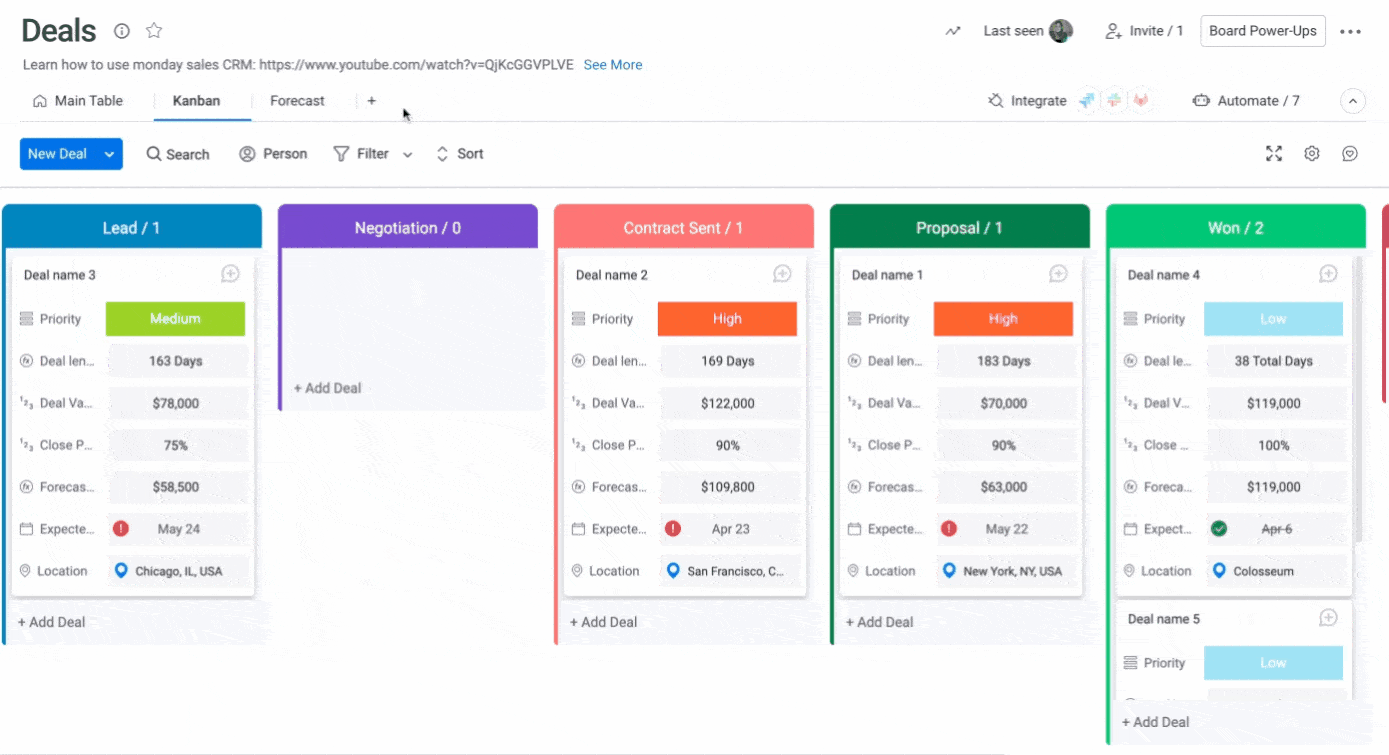
5 essential components of strategic plan templates
A strong strategic plan template includes more than goals and timelines — it connects vision with execution through a clear structure. These five components form the foundation of every effective plan, ensuring your strategy is focused, measurable, and built for follow-through.
1. Mission and vision statements
Your mission explains why your organization exists. Your vision describes where you’re headed. Together, they provide the north star for every strategic decision.
Good mission statements are concise and memorable. Vision statements should inspire while remaining achievable.
2. SWOT analysis framework
SWOT analysis examines your Strengths, Weaknesses, Opportunities, and Threats. This framework helps you understand your strategic position before setting goals.
The analysis uses a simple 2×2 grid. Internal factors (strengths and weaknesses) on one axis, external factors (opportunities and threats) on the other.
3. Strategic goals and objectives
Goals provide broad direction. Objectives are specific, measurable targets that support each goal. This hierarchy ensures your plan includes both inspiration and accountability.
Follow the SMART framework or other strategic planning frameworks — make objectives Specific, Measurable, Achievable, Relevant, and Time-bound.
4. Key performance indicators (KPIs)
KPIs transform abstract strategies into measurable outcomes, a critical link given that employees who understand how success is measured are twice as likely to feel motivated. They tell you whether you’re making progress or need to adjust course.
Choose KPIs that teams can actually influence through their work. Balance leading indicators (predictive) with lagging indicators (results).
5. Implementation roadmap
Roadmaps show who does what by when. They break large strategic initiatives into phases with clear deliverables and success criteria.
Include resource requirements, dependencies, and potential risks. This transforms good intentions into executable plans, a vital step since research shows over a quarter of companies create plans with no execution path.
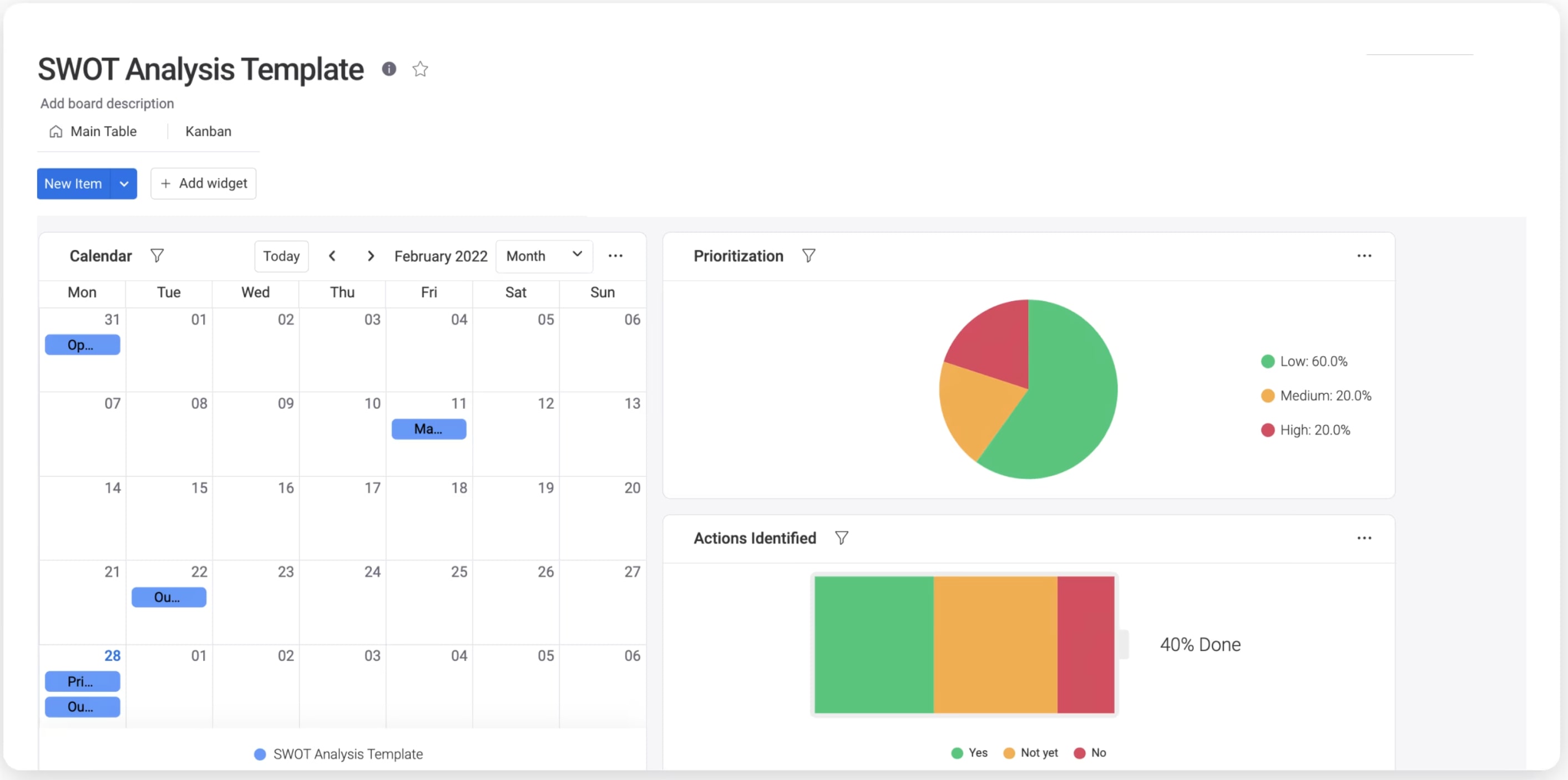
How to choose the right strategic plan template for your organization
Picking the right template sets you up for planning success. What’s your organization’s size and complexity? Larger organizations need more detailed templates. How much planning experience does your team have? Start simple if you’re new to the strategic management process.
Key selection criteria to evaluate:
- Resource availability: match template demands to your team’s capacity.
- Industry requirements: some sectors need specialized planning elements.
- Stakeholder expectations: choose formats that work for your audience.
- Update frequency: pick templates that support your review cycle
By utilizing platforms such as monday work management you can discover customizable templates that grow with you. Start with basics and add sophistication as your planning maturity increases.
How to create your strategic plan using templates
Ready to build your strategic plan? Follow these steps to move from blank template to actionable strategy:
Step 1: select your strategic planning team
Gather people who represent different perspectives and departments. Include both strategic thinkers and implementation experts.
Define specific roles and decision rights upfront as this establishes ownership and keeps the process moving forward efficiently.
Step 2: choose the right template format
Match your template to your needs and audience. Consider who will use the final plan and how they prefer to consume information.
Some teams work best with visual formats. Others need detailed written documentation.
Step 3: define your mission and vision
Create statements that inspire and guide. Your mission should explain your purpose with precision. Your vision should paint a picture of future success.
Test these statements with stakeholders. Do they resonate? Do they provide practical guidance?
Step 4: conduct your strategic analysis
Gather data about your internal capabilities and external environment. Use SWOT analysis, market research, and competitive intelligence.
Look for patterns and insights that inform strategic choices. What advantages can you leverage? What threats must you address?
Step 5: set SMART goals and objectives
Transform insights into specific targets. Each objective should directly support a strategic goal.
Assign ownership and deadlines. Without accountability, even great objectives remain wishes.
Step 6: develop your implementation plan
Break big initiatives into manageable chunks. Define phases, milestones, and resource needs.
Identify potential obstacles and create contingency plans. Proactively anticipating challenges allows you to stay ahead of surprises.
Step 7: establish review and update cycles
Schedule regular check-ins to track progress. Quarterly reviews work well for most organizations.
Build in flexibility to adjust as you learn. Strategic plans should guide, not constrain.
Strategic plan template formats and download options
Strategic plan templates come in multiple file formats, each suited to different planning needs and audiences. The right choice depends on how you intend to build, share, and present your strategy.
The table below compares the most common options and their key advantages:
| Format | Best for | Advantages | Considerations |
|---|---|---|---|
| Word documents | Text-heavy plans | Easy editing and commenting | Limited visuals |
| Excel spreadsheets | Data-driven plans | Built-in calculations | Complex formatting |
| PowerPoint | Executive presentations | Visual appeal | Less detail |
| PDF templates | Final distribution | Professional look | Hard to edit |
Transform your strategic plan template into action with monday work management
Static templates are just the beginning. By transitioning to a modern platforms like monday work management you can bring your strategic plans to life through dynamic workflows and real-time tracking.
The platform connects planning to strategic execution with features designed for success:
- Visual goal tracking: see progress toward objectives at a glance.
- Resource optimization: balance workloads based on strategic priorities.
- Automated updates: keep stakeholders informed without manual reporting.
- Cross-team alignment: connect departmental plans to company strategy.
Advanced automations for strategic execution
Eliminate manual work that slows strategy implementation: the platform’s advanced automation engine turns repetitive tasks into background processes, giving teams more time to focus on high-impact strategic work.
- Custom automation recipes: create if-then workflows that match your strategic processes.
- Status-based triggers: automatically advance work when milestones are reached.
- Time-based automations: schedule strategic reviews and reminders without manual tracking.
Hundreds of integrations for connected strategic planning
Break down silos between your strategic plan and the tools your teams already use. Our extensive integration ecosystem ensures data flows seamlessly across your tech stack.
- Data synchronization: keep information consistent across platforms.
- Workflow continuity: connect strategy to execution tools without disruption.
- Centralized visibility: view strategic progress without jumping between systems.
Powerful AI features that elevate strategic thinking
AI capabilities take planning further. Our intelligent tools help you develop, refine, and monitor strategic initiatives with unprecedented efficiency.
- AI Blocks: categorize initiatives, summarize progress, and extract insights from planning documents.
- Digital Workers: monitor your strategic health and flag issues before they derail progress.
- Predictive analytics: identify potential roadblocks in your strategic implementation.
Strategic plan dashboards for real-time visibility
Transform how you monitor and communicate strategic progress with customizable dashboards that provide instant insights into what matters most.
- KPI tracking widgets: visualize progress toward strategic objectives.
- Cross-functional views: see how different departments contribute to overall strategy.
- Stakeholder reporting: generate executive-ready updates with a few clicks.
Transform your strategic planning from periodic exercise to continuous improvement with monday work management. Sign up and get started today.
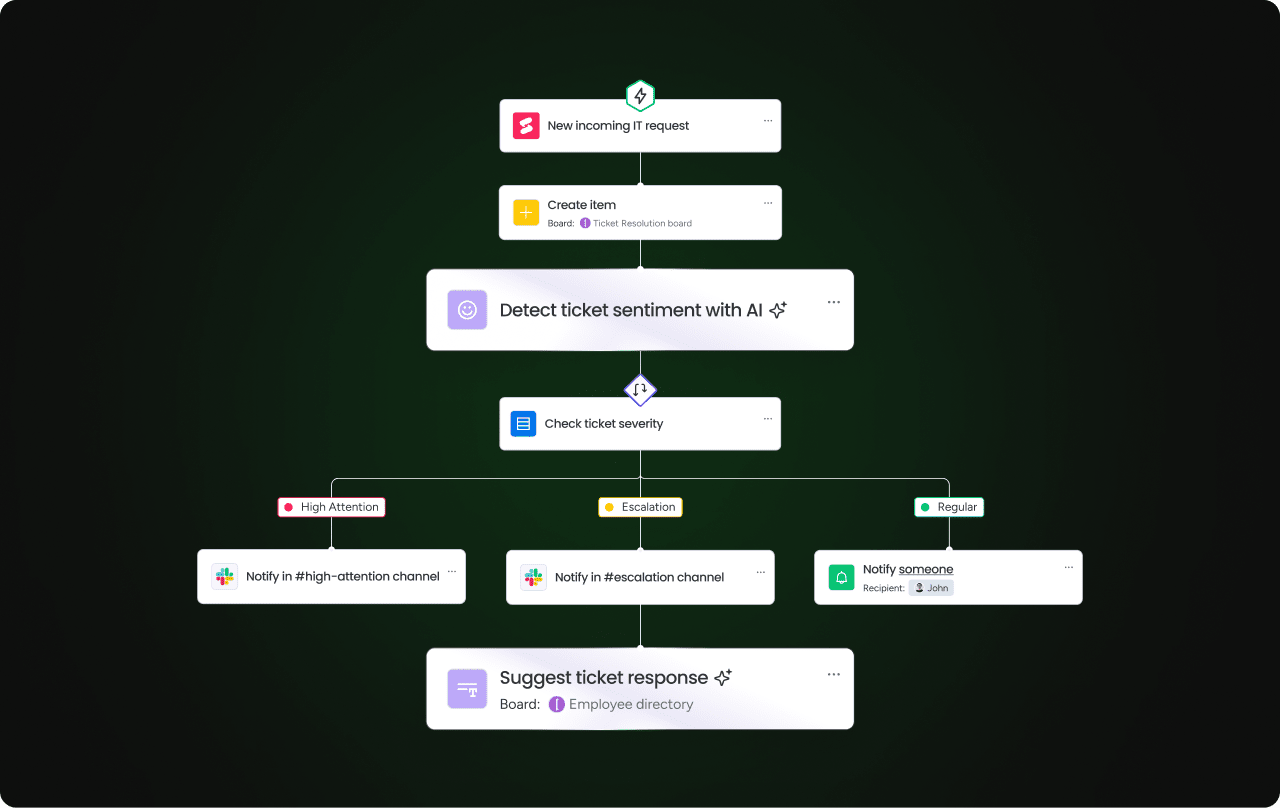
Frequently asked questions
What's the difference between a strategic plan template and a business plan template?
A strategic plan template outlines your organization’s long-term direction, priorities, and goals — guiding how you will achieve growth and adapt over time. A business plan template, on the other hand, focuses on the operational and financial details needed to launch or sustain a specific venture, often used to secure funding or communicate viability to stakeholders.
How long should a strategic plan created from a template be?
Strategic plans typically range from one page for simple overviews to 20 pages for comprehensive organizational strategies. Most effective plans fall between five to ten pages to maintain focus while covering essential elements.
How often should you update a strategic plan created from a template?
Review your strategic plan quarterly to track progress. Update it annually to reflect changing market conditions, organizational growth, and new opportunities that affect your strategic direction.
Can the same strategic plan template be used across different departments?
While core template structure can remain consistent, each department should customize sections to reflect specific objectives, metrics, and stakeholder requirements for maximum relevance and effectiveness.
What file format works best for strategic plan templates?
Word documents offer the most flexibility for collaborative editing and content development. PowerPoint formats work well for stakeholder presentations and visual communication of strategic concepts.
Do strategic plan templates work effectively for small businesses?
Yes. Strategic plan templates are especially valuable for small businesses. They provide professional structure and comprehensive planning coverage without requiring extensive planning experience or dedicated strategy resources.
 Get started
Get started 

